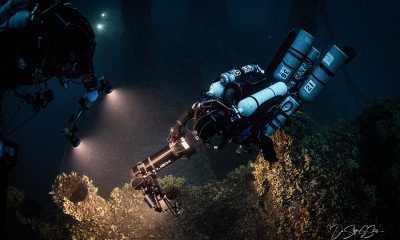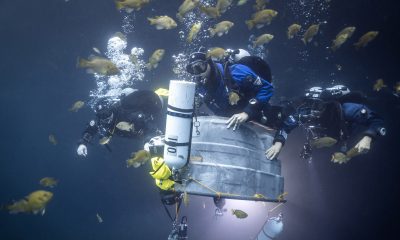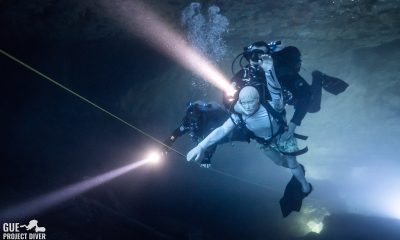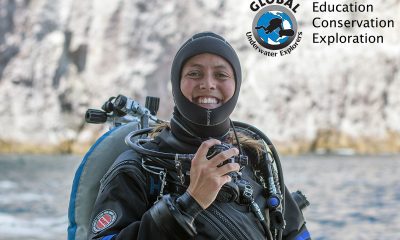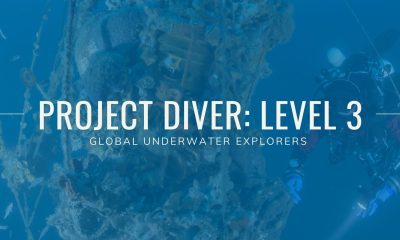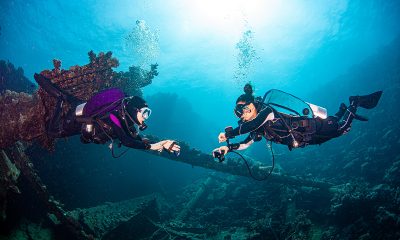Community
Teaching Again as the World Tries to Reopen
Conducting classes and supervising dive ops during the midst of a pandemic can be challenging. Here GUE instructor Francesco Cameli details his experience teaching his first “Fundies” class since lockdown! Welcome to the new normal.

By Francesco Cameli
Header Photo by Damon Loble.
The world has definitely become a little stranger as we all try to deal with the ongoing COVID-19 pandemic and are forced to adapt our way of life to safeguard ourselves from infection. Needless to say, it has been a challenging time for diving instructors around the world, and certainly here in Southern California.
Whether you like reef structure, macro photography, kelp forests, or deep wrecks, Southern California offers some of the best diving in the world. However, it is often overlooked in favor of warmer waters and more exotic locations. It’s true that conditions here are at times challenging, but as the saying goes, “if you can dive in SoCal, you can dive anywhere.” As such, it has been fertile ground for divers seeking out GUE training in an effort to perfect their underwater skills.
As we launched into 2020, diving conditions in SoCal were stunning. We were seeing 30 m/100 ft plus visibility days, and the new GUE community-inspired dive boat, Big Blue, had just been delivered and began conducting dive operations. Importantly, our four active local GUE instructors were busy with classes. Then the pandemic hit. In early March, the governor of California issued a stay-at-home order and all activity shut down. As a result, courses—and to a large extent local diving—were placed on hold.
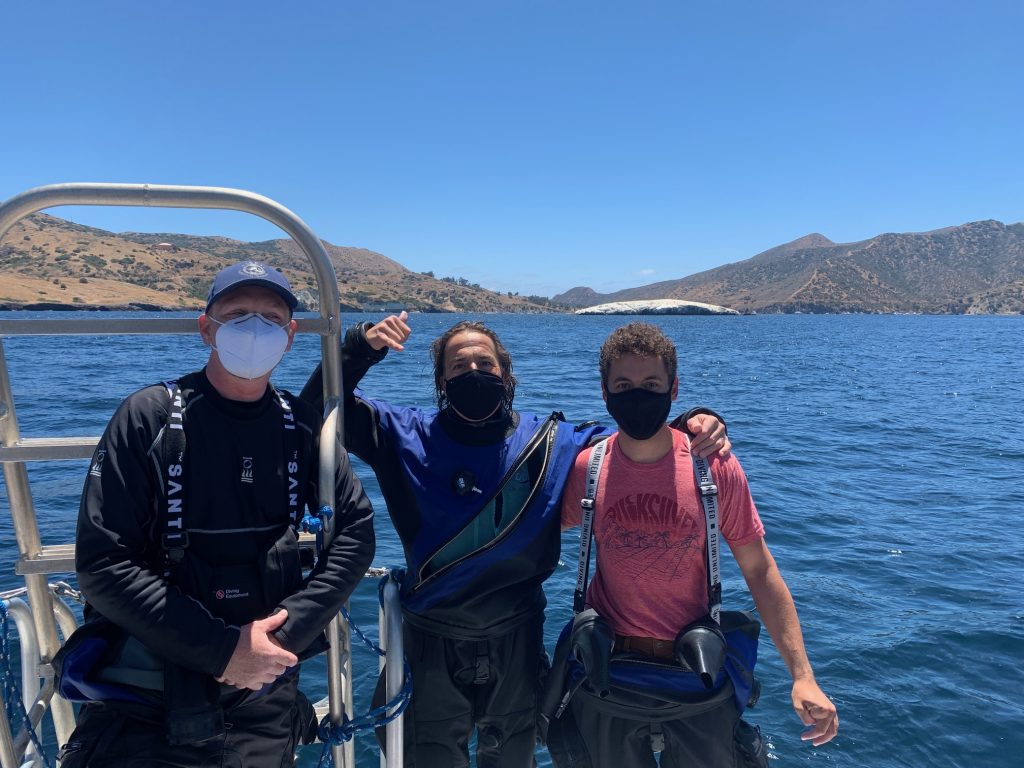
As of early July, we have resumed limited diving operations carefully following the recommendations from Divers Alert Network to insure our divers’ safety. We have also begun modified classes. In fact, as luck would have it, I just finished teaching my first Fundamentals class in this new COVID-19 world, and wanted to share my experience of what it was like.
The short answer is that it was not unlike many Fundamentals classes before it. While there were a couple of small changes that I think overall actually made for a better learning experience for my students, there were a few minor drawbacks.
Taking The Plunge
Because of the required social distancing, I experimented with working with the students remotely for all of the lectures and some of the land drills. At first, I was unsure as to how this was going to pan out, but it actually turned out great. You see, typically here in Los Angeles, because of the logistics of going diving, we tend to pre-load the class with all the academics in one marathon day consisting of Modules 1-6 followed by the swim test. That was traditionally how I had been doing it. Frequently though, you could see the students start to struggle with concentration after about four modules. So I would take a break and do the swim test but then, they would be tired from the swim test. Not so anymore! This last class, we scheduled three Zoom meetings, each lasting about two to three hours, where we could go through the modules at a leisurely pace. This allowed each student to meet in the comfort of their home and at a time that suited them.
As these were going so well, I then tried Valve drills, Basic 5, and SMB deployment with us all sitting in our rigs. I have to say, that seemed to be well received, too. I was able to focus easily on each student, and the picture quality meant it was really no different than if they had been standing before me in person. So far, so good!
Now, because these meetings only took up the equivalent of one day of time, we were left with three days of diving (versus two, normally). The cool part is that we had ample time, thanks to our swift local boat Big Blue to still get three dives in per day. So instead of doing six dives, we did nine. We filled in the missing land drills on the boat, which—as it was travelling with COVID-19 load restrictions—still gave us plenty of room to social distance and work on the drills.
Everyone of course was wearing a mask at all times and kept a bit more to themselves. The students benefited greatly from these extra dives as we could really focus and spend time on the subject matter that required more attention. I feel, after all, that my students benefit most from the time they get with me in the water, so the more the merrier.
We were even able to conduct the swim test in the open ocean. The boat leant itself well to the task as 10 times around the boat rather neatly worked out to be 300 yards. As for the breath hold, we deployed 15 m/50 ft of current line with a diver holding the line taught while the students swam from the boat to the buoy.
Getting Wet
So, what about the diving itself? Well, managing the students on the surface was easy enough. Keeping them 2 m/6 ft or so apart worked while we discussed dives and debriefed. Then once the regulators were in, we would get closer and descend as a team. Honestly, this was no great chore.
The one slight hiccup I had not anticipated, however, came in the form of the S-Drill COVID-19 style. The donation itself went without an issue, and the switching to a necklace instead of the donated regulator was no problem at all. The full long hose deployment and swimming part were also somewhat unspectacular with the exception of the fact that you could see the cogs turning as the out of gas (OOG) student tried to decide on hose routing once a direction was picked. Because they were simply holding the donated regulator and were in fact breathing from their own necklace, they did not always have the regulator correctly orientated and therefore had to be reminded that the hose would normally be on the right side of their face. This of course is something we never actually think of when the regulator is in our mouths. The biggest confusion, in my opinion, came at the moment when it was time to clean up.

What I noticed was that frequently the donating student would try to clean up too soon before the OOG student was back on their primary regulator. I can only assume that they were confused by seeing their team mate holding a regulator in their hand and not breathing from it, which would normally signify it was time for the donating diver to clean up. This small confusion was easy enough to clear up in the subsequent debrief, and the students managed just fine after that. This was a small price to pay, I feel, to ensure that our students remained safe and that we reduced as much as possible the risk of passing COVID-19 through regulator sharing. Just in case, we had disinfectant ready on the boat to re-sanitize a regulator that was unwittingly used not by its rightful owner, but the need never presented.
In conclusion, I think the differences are not so great that the class suffered in any way. As it went, in this case, both students earned a well-deserved tech pass and were rather chuffed (those Brits!) with how the class proceeded. I myself greatly enjoyed the online lecturing and the extra dives. I may well try to find a way to keep conducting fundamentals classes in this manner in the future to maximize water time and split up the modules for better assimilation and retention.
Happy Diving everyone!

Born in France but hailing from Italy via England, Francesco’s passion for the ocean was ignited early on by the work of Jaques Cousteau, and Luc Besson’s film “The Big Blue.” Growing up in the seaside village of Portofino, Italy, Francesco spent just about every daylight hour of his summers freediving. In his 20s and 30s, he found himself locked in a recording studio in London or Los Angeles making records for the likes of Queen and Duran Duran as well as Korn, Stone Sour, Avatar, and others. Francesco rediscovered the ocean on a trip to Kona, which is where his scuba journey began in earnest. Since then, he has averaged over 200 dives a year cultivating his own skills. Once he found GUE, he worked his way through the curriculum and became a GUE instructor in 2019. That year, the passionate and exacting polymath was one of the busiest GUE instructors in Los Angeles, and is now working to become a Tech One instructor in 2020. Some say you can occasionally hear him singing to the fish.
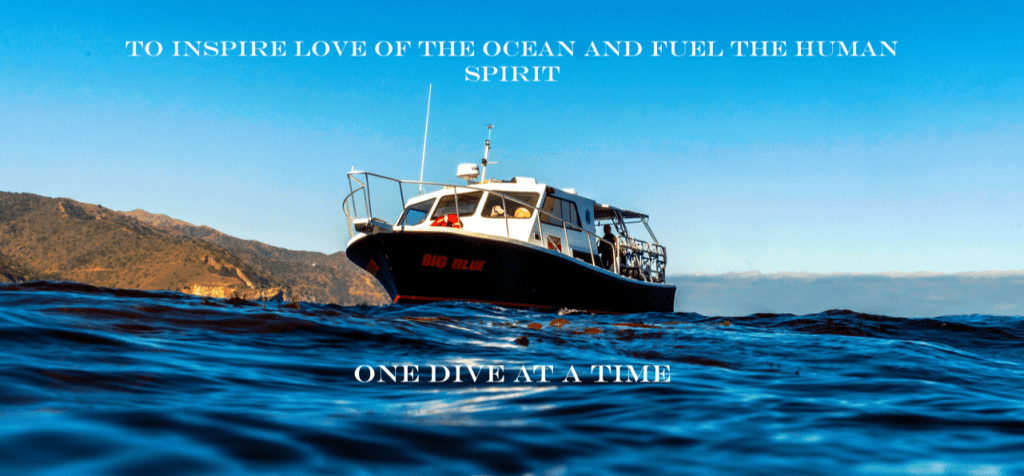
Big Blue was built by a GUE instructor with the GUE and tech diving community in mind. She’s got a big wide ladder, wide diver spaces to accommodate doubles, CCRs, comfy seating for long rides to far targets and speed. Big Blue is one of the fastest dive boats in the Los Angeles area. What’s more, it offers a tech savvy crew. Visit us at: www.bigbluediveboat.com or on FB!












